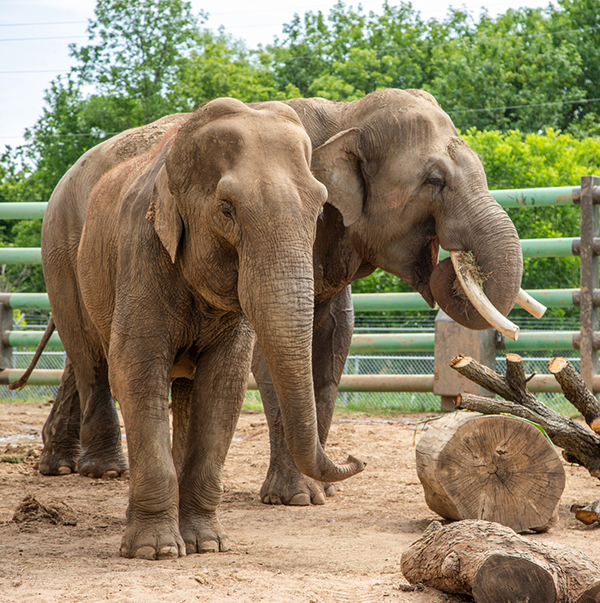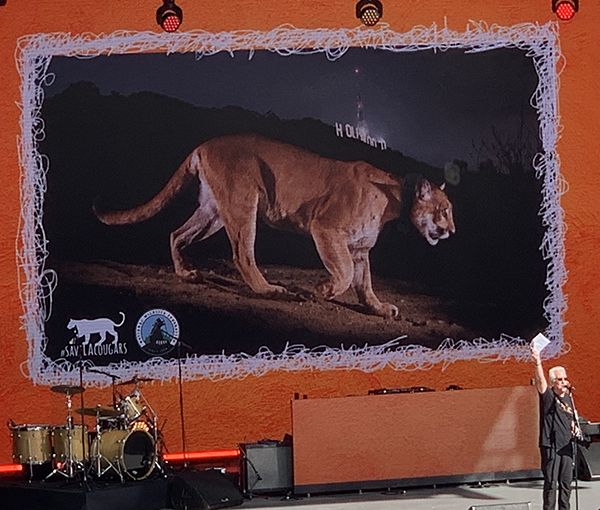L.A. Zoo’s former elephants adapting to new home amid welfare concerns

LOS ANGELES — Two months after the Los Angeles Zoo quietly — and controversially — transferred its last two Asian elephants to their new home in Tulsa, Oklahoma, the elephants’ new caretakers said the animals are acclimating well — though an animal-rights group continues to describe the facility as inadequate and is urging for the pair to be sent to a much larger preserve.
“Billy and Tina are acclimating well in their new home,” Ellen Averill, vice president of communications and strategy for Tulsa Zoo Management, wrote in an email to City News Service.
“Billy and Tina’s care team will continue the acclimation process with larger groupings and as always focus on the individual needs of each elephant in our care.”
Since the pair arrived at the Tulsa Zoo May 21, the elephants progressed from “initial howdies” — or safe and controlled introductions that allow elephants to interact through a barrier — to direct contact in planned groupings with the facility’s other elephants, according to Averill.
Billy and Tina joined male elephants Sneezy and Hank, and females Sooky, Booper and Connie.
“This is the time their care team learns about interpersonal dynamics — who will be best friends, who wants to take charge, who wants to hang out on the sidelines,” Averill said in the email. “Learning about their personalities is all part of the process of building a strong herd.”
Last Chance for Animals, a national nonprofit organization dedicated to the end of animal exploitation, contended the Tulsa Zoo’s space for the elephants was inadequate and fell short for the animals’ long-term health.
The Tulsa Zoo’s Elephant Experience and Preserve covers 17 acres, including a 36,650-square-foot elephant barn and a 10-plus-acre wooded elephant preserve.
Last Chance for Animals described the 17 acres as noncontiguous, as it is divided into three sections. The group raised concerns about the older area of the facility being considerably smaller, lack of access to shade and limited enrichment.
Additionally, the group said the Tulsa Zoo’s 10-acre preserve is not open for use as well.
Last Chance for Animals hired elephant expert Chris Draper as a consultant as the group worked to free Billy and Tina before their relocation.
Draper visited the Tulsa Zoo on May 10 to assess the site.
“In all honesty, some parts of the elephant area at Tulsa Zoo left me very underwhelmed,” Draper said in a telephone interview. “I think it’s fair to say that the older areas are definitely, in my opinion, insufficient for elephants to have adequate welfare.”
“Not terrible, but again, fairly featureless, and really, you know, the overwhelming sense I had is it was really hard to see how it would be a step up from the site in Los Angeles,” Draper added.
While he agreed that there will be greater opportunities for social interaction for Billy and Tina with their housemates, Draper raised concerns about complications that could arise.
“This is not a herd. It’s something I’m very keen for everybody to get their head around. When we’re talking about elephants in captivity, more often than not, it’s a group of strangers that happen to just about rub along,” Draper said.
Wild herds of either African or Asian elephants usually consist of a group of related females that have multiple generations such as grandmothers, mothers, aunts, and sisters, who all have lived alongside each other for their whole lives in the same group, according to Draper.
The elephants at the Tulsa Zoo may bond, but there’s also the risk that the animals may become aggressive or attack one another.
Draper noted that Tulsa Zoo’s preserve had dirt — a key element in elephant care as it relates to the animals’ feet, joints and weight. Naturally, elephants will maintain their weight through daily exercise usually consisting of miles and miles of walking, and maintain their feet health by digging and rooting around in the ground.
Zoo keepers will assist by trimming soles and nails of the elephant, but Draper encouraged Tulsa officials to maintain the dirt.
“Quite often what happens, if it’s the wrong type of dirt and it’s not maintained, it can pass down almost to the texture of the consistency of concrete and then it becomes really problematic,” Draper said.
Draper previously served as the chief operating officer of the Performing Animal Welfare Society, as well as the head of Animal Welfare and Captivity at the Born Free Foundation. He studied zoology and primatology at University College London, and earned a doctorate at the University of Bristol.
In her email, Averill described the Tulsa Zoo’s elephant preserve as having multiple yards to provide elephants with “various, complex spaces and experiences.” Sand makes up the majority of the indoor spaces, and the outdoor yards are predominantly grass and dirt.
She also noted that the 10-acre preserve is being prepared for the elephants.
“There are many considerations that will determine timing, including diet — over indulging in new browse growth can cause colic,” Averill said.
Browse refers to leaves, branches and other vegetation that elephants eat.
“Each elephant has an individualized diet,” Averill added. “Geriatric elephants, like Tina, require shredded hay. Overall, it is better for the elephants’ individual dietary needs to wait until the new growth begins to die back in the summer heat. Our zoo team is using this time to inspect the acreage and prepare it for the elephants to make it their own.”
In a telephone interview, Lisa Beal, campaign manager for Last Chance for Animals, said that the organization continues to attempt to raise support for its belief that elephants shouldn’t be in zoos. The organization estimated that more than 300 elephants remain in captivity in the United States.
As part of its mission, Last Chance for Animals is urging Los Angeles residents to join their protests, or actions led by animal rights groups, against zoos and to free animals in captivity.





